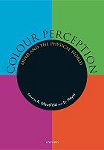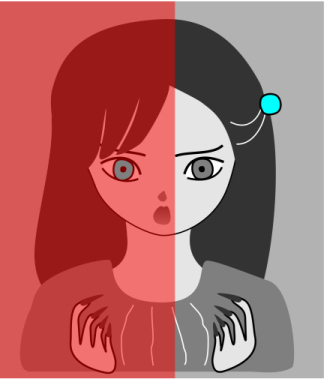
About this site
A philosophy site by Mark in Malaysia.My real interest is the mind-body problem and I’m gradually trying to figure out what I want to say about this.
Meanwhile, here’s some other stuff that I’ve found to be more tractable over the years, hard as they are in themselves.
 Wittgenstein’s grave in Cambridge receives more than a hundred visitors every year, not that there’s a contest.
Wittgenstein’s grave in Cambridge receives more than a hundred visitors every year, not that there’s a contest.I discovered philosophy when I was twenty-one and never looked back. Duck finally found water and I cannot even begin to describe what the subject did for me. If you’re looking for a good introduction to the subject, this one did something for me.

I also had many reliable teachers at all levels to whom I am very grateful. I hope that some people will find this site useful in return.
Monochrome rainbows
 But, to determine more absolutely, what Light is, after what manner refracted, and by what modes or actions it produceth in our minds the Phantasms of Colours, is not so easie.
But, to determine more absolutely, what Light is, after what manner refracted, and by what modes or actions it produceth in our minds the Phantasms of Colours, is not so easie.
What sorts of things are colour, sound, smell and taste? Where in the world do they come from? The “secondary qualities” are something of a 500-year-old nightmare in the philosophy of mind. They seem to have no place in physical reality and yet we seem to have nowhere else to locate them.
Consider the case of colour. Despite considerable rumination, I still have no clear sense of where colours come from or in what realm they subsist. But I’m glad to have discovered the remarkable illusion above, which is utterly thought-provoking. The bars seem to span all the colours of the rainbow but the image itself consists of nothing but shades of blue!
The illusion also works with other hues like red, yellow or green.
An illusion of this sort was described by the Cambridge psychologist Paul Whittle (1938-2009) in his paper, ‘Contrast Colours,’ in the collection, Colour Perception: Mind and the Physical World (Oxford 2003), edited by Mausfeld & Heyer.

Unfortunately, Whittle’s description was rather abstract and contained no colour illustrations. I found it hard at the time to appreciate what he was claiming.
Later I discovered the colour illusions of the Japanese psychologist Akiyoshi Kitaoka and realized how a simple illusion of the sort Whittle had described might be created with a couple of coloured layers in a graphics program. That’s where the rainbows come from.
 Here’s one of Kitaoka’s striking illusions. Going by a “painter’s palette,” the girl’s eyes are (in fact) the exact same shade of grey.
Here’s one of Kitaoka’s striking illusions. Going by a “painter’s palette,” the girl’s eyes are (in fact) the exact same shade of grey.
Yet her right eye looks decidedly coloured, like the clip on her hair, and far from being a neutral grey.
[ Toggle eye mask ]
So Kitaoka has conjured a green out of a grey. This conjuring up of “fictitious” colours has apparently also been known to painters throughout the centuries.
Whittle’s explanation for such phenomena revolved around colour contrast, the tendency of colours to “alter” their hues when set against suitable backgrounds. He considered this phenomenon to be much more central than colour scientists tended to realize and advertised this in numerous papers up to the time of his passing in 2009.
But another explanation revolves around colour constancy, which refers to our ability to judge the true colours of objects under unusual viewing circumstances. In Kitaoka’s illusion, for example, our brains might be “calculating” that only a green thing would look that shade of grey through a red filter.
 The phenomena of contrast and constancy are almost certainly related but their exact relation is still unclear. An excellent historical account of the issue is found in Alan Gilchrist’s Seeing Black and White (Oxford 2006), through which I’m still working my way.
The phenomena of contrast and constancy are almost certainly related but their exact relation is still unclear. An excellent historical account of the issue is found in Alan Gilchrist’s Seeing Black and White (Oxford 2006), through which I’m still working my way.
The monochrome rainbows however seem to be telling us that if we saw everything in shades of blue (say), then we would still see everything in their regular colours, which paradoxical pronouncement seems to be telling us something important about colour. I haven’t quite figured out what it is.
[2013]

– Isaac Newton, Letter to the Royal Society
What sorts of things are colour, sound, smell and taste? Where in the world do they come from? The “secondary qualities” are something of a 500-year-old nightmare in the philosophy of mind. They seem to have no place in physical reality and yet we seem to have nowhere else to locate them.
Consider the case of colour. Despite considerable rumination, I still have no clear sense of where colours come from or in what realm they subsist. But I’m glad to have discovered the remarkable illusion above, which is utterly thought-provoking. The bars seem to span all the colours of the rainbow but the image itself consists of nothing but shades of blue!
The illusion also works with other hues like red, yellow or green.
An illusion of this sort was described by the Cambridge psychologist Paul Whittle (1938-2009) in his paper, ‘Contrast Colours,’ in the collection, Colour Perception: Mind and the Physical World (Oxford 2003), edited by Mausfeld & Heyer.

Unfortunately, Whittle’s description was rather abstract and contained no colour illustrations. I found it hard at the time to appreciate what he was claiming.
Later I discovered the colour illusions of the Japanese psychologist Akiyoshi Kitaoka and realized how a simple illusion of the sort Whittle had described might be created with a couple of coloured layers in a graphics program. That’s where the rainbows come from.

Yet her right eye looks decidedly coloured, like the clip on her hair, and far from being a neutral grey.
[ Toggle eye mask ]
So Kitaoka has conjured a green out of a grey. This conjuring up of “fictitious” colours has apparently also been known to painters throughout the centuries.
Whittle’s explanation for such phenomena revolved around colour contrast, the tendency of colours to “alter” their hues when set against suitable backgrounds. He considered this phenomenon to be much more central than colour scientists tended to realize and advertised this in numerous papers up to the time of his passing in 2009.
But another explanation revolves around colour constancy, which refers to our ability to judge the true colours of objects under unusual viewing circumstances. In Kitaoka’s illusion, for example, our brains might be “calculating” that only a green thing would look that shade of grey through a red filter.

The monochrome rainbows however seem to be telling us that if we saw everything in shades of blue (say), then we would still see everything in their regular colours, which paradoxical pronouncement seems to be telling us something important about colour. I haven’t quite figured out what it is.
[2013]
Menu
 What’s a logical paradox?
What’s a logical paradox? Achilles & the tortoise
Achilles & the tortoise The surprise exam
The surprise exam Newcomb’s problem
Newcomb’s problem Newcomb’s problem (sassy version)
Newcomb’s problem (sassy version) Seeing and being
Seeing and being Logic test!
Logic test! Philosophers say the strangest things
Philosophers say the strangest things Favourite puzzles
Favourite puzzles Books on consciousness
Books on consciousness Philosophy videos
Philosophy videos Phinteresting
Phinteresting Philosopher biographies
Philosopher biographies Philosopher birthdays
Philosopher birthdays Draft
Draftbarang 2009-2024  wayback machine
wayback machine
 wayback machine
wayback machine

